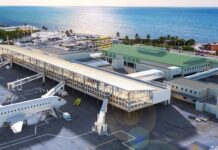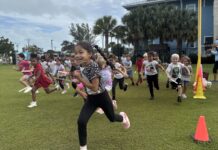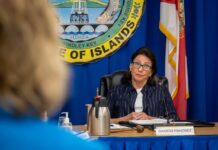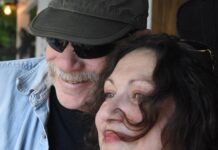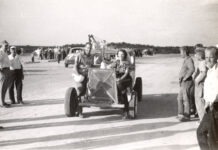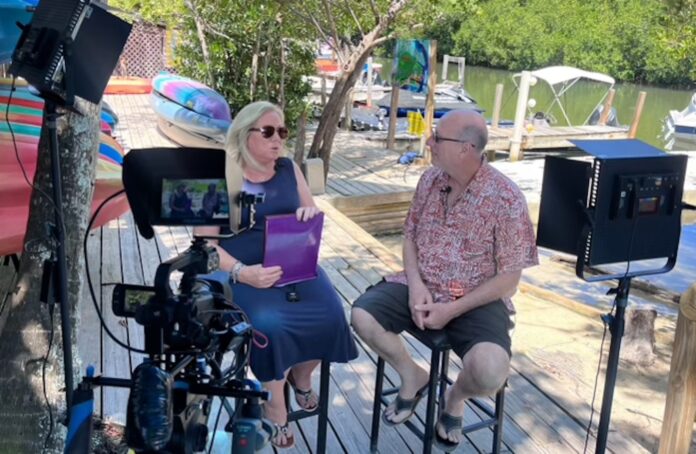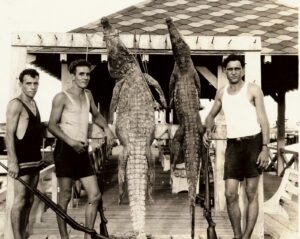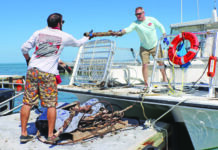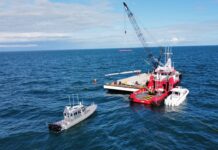After almost two years working on the property, Robbie’s of Islamorada feels homey. The vibe is one of the reasons I picked it as the place to pour myself back into the hospitality industry.
Bartending was not what I planned, but sometimes you do what you do to make your world keep spinning in the right direction. Besides, if I was going to stand around mixing up excellent mojitos, at least at Robbie’s I can look up and see Indian Key if I need to regain a little balance.
For anyone who has been following my Florida Keys History with Brad Bertelli group on Facebook (and you totally should), my time at Robbie’s has been about more than just working out at the little bar on the beach. There has been a definite history component, too. Check out the history tab on their website.
I developed a history tour for the glass-bottom boat Transparensea operating out of the marina. In addition to amazing trips out to the reef, they offer the history tour every Thursday at 9:30 a.m. Those who take the two-hour trip listen to my recorded voice telling stories about Indian Key, Lignumvitae Key, the original Overseas Highway and the ferry system that was required to make the trek between Key West and the mainland. I also talk about the 1935 Labor Day Hurricane.
Every Thursday at Robbie’s, I have been holding “office hours” between 11 a.m. and 2 p.m. The decision was a good one. I hang out for a couple of hours and talk to anyone who stops, says “hello” and asks about the local history. Knowing I’ll be there, people also plan to visit and share their stories. This is one of the things that let me know establishing office hours was, indeed, a really good idea.
For instance, a couple of weeks ago one of the old marijuana smugglers stopped by to introduce himself, give me a copy of his book and chat. He told some of the best stories I have heard in a long time; some, I imagine, appear in his book “Smugglers’ Times: Smuggling In The Days Of Marijuana Prohibition” (as told by retired 30-plus year smuggler Keys Don and friends to M. Dennis Taylor).
If only Webb Dillard had chosen that day to come and film. Webb and I have been working together since 2022. He has been recording me talking about history and several of my lectures for the “Florida Keys History with Brad Bertelli” segment on his channel “Key West Vibes” available at Roku and the Apple app store. While Dillard did not drive up from Marathon that Thursday, his schedule freed up, so he could come last Thursday, and his timing could not have been more impeccable.
Local history matters; it is important. I like to write about and talk about these histories because when people stop talking about them, they become forgotten relics. All too often, they disappear. That said, during office hours last week, two wonderful things happened. First, Tracy and Derrick Myers coordinated a meeting before returning home to Central Florida. Second, I woke up to a text from Dillard asking if it was cool that he come up to film. My response was, “Perfect day for it.”
Tracy Myers, who has deep family roots in Marathon, contacted me weeks prior, hoping we could arrange a time to meet. A tip of the cap to Tracy, who has been working diligently to make sure her family’s story will not be forgotten. It is an extraordinary story, and she has succeeded in having several plaques placed to honor the “Father of Marathon” – including a brass interpretive panel installed on a coral rock at the Seven Mile Bridge.
Marathon has long been one of my historical weak spots. Meeting Tracy and hearing her story gave me a new understanding of the Middle Keys in general and Marathon in particular. Her great-grandfather, William Allen Parrish Sr., was a big deal in Marathon’s history.
Before Parrish came to the Keys, he lived in Dania Beach, where he was a commercial fisherman. According to Tracy, he first visited Marathon the same year Henry Flagler rode the train on its maiden run to Key West in 1912. It was 15 years later when Parrish made the big move and relocated his family to Key Vaca.
One thing became obvious after talking with Tracy and listening to her story. While Marathon came to fruition as a railroad town, with much of its early history developed due to the Florida East Coast Railway, Parrish worked to develop the community. Tracy wrote about her great-grandfather. In her own words: “He was a very generous man determined to see Marathon grow. W.A. Parrish Sr. shared his vision of Marathon by offering very great deals on property to people that he thought would contribute to the town. One example, which is typical of his kindness, is that he sold 100 feet of highway frontage extending to the Florida Bay for $300. He continued selling as well as donating his accumulated property ensuring the prosperity of Marathon and an opportunity for all, earning him the title ‘Father of Marathon.’”
Who might stop by during office hours in the weeks ahead? Please let me know if you have a story to share. If we are lucky, Webb will be available to film and capture it for others to hear. I hope to see you soon.


